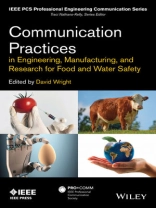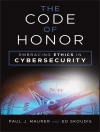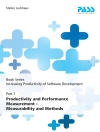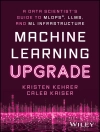This book demonstrates some of the ways in which communication and developing technologies can improve global food and water safety by providing a historical background on outbreaks and public resistance, as well as generating interest in youth and potential professionals in the field
- History of muckraking in the food industry
- Case study on groundwater regulation
- Interviews with members of the beef industry and livestock market owners
Inhoudsopgave
A Note from the Series Editor ix
Preface xi
List of Contributors xiii
Acknowledgments xv
1 Cowboys and Computers: Communicating National Animal Identification in the Beef Industry 1
David Wright
1.1 Industries Collide 1
1.1.1 Resistance to Technology in the Beef Industry 3
1.1.2 Having a Cow over Mad Cow Disease 3
1.1.3 Change Is Slow in the Beef Industry 6
1.1.4 Communication Breakdowns and Coffee Shop Policymaking 7
1.1.5 Can We All Just Get Along? 9
1.1.6 USDA Strategies for Communication 10
1.2 A New Approach to Studying Complex Communication Issues 11
1.2.1 Ethnography and Diffusion in the Beef Supply Chain 13
1.2.2 Communication Theory Linguistics and Diffusion in the Beef Supply Chain 16
1.2.3 Linguistic Textual Analysis 19
1.2.4 Diffusing Innovations in the Real World 23
1.2.5 Diffusion and Communication Networks 24
1.3 Results of My Investigation 25
1.3.1 Alice at the Auction 26
1.3.2 Backstage at the Sale Barn 27
1.3.3 Buying the NAIS 29
1.3.4 Down on the Farm 30
1.3.5 Interviews with Members of the Beef Industry 32
1.3.6 Interviews with Livestock Market Owners 33
1.3.7 Rules from the Road 38
1.3.8 Communication Gaps and Communication Theory 40
1.3.9 Textual Analysis with Implicature and Pragmatics 48
1.4 Lessons of Beef and Bandwidth 49
1.4.1 No Pardon for Jargon 51
1.4.2 Alice Is Not in Wonderland 52
1.4.3 The Telephone Game Still Happens 53
1.4.4 It All Comes Down to Doin’ Business 54
1.4.5 What We Have Here Is a Failure to Communicate 56
1.4.6 Culture Is King 58
1.4.7 The Situation Now 59
References 60
2 Children Communicating Food Safety/Teaching Technical Communication to Children: Opportunities Gleaned from the FIRST® LEGO® League 2011 Food Factor Challenge 63
Edward A. Malone and Havva Tezcan-Malone
2.1 Enhancing the Visibility and Recognition of Technical Communication 63
2.2 Literature Review: Teaching Technical Communication Engineering and Food Safety to Children 65
2.3 Background: The League the Challenge and the Team 67
2.3.1 First Lego League 67
2.3.2 The Food Factor Challenge 69
2.3.3 The Team: Global Dreamers 70
2.4 Examples of Technical Communication Activities in FLL Projects 71
2.4.1 Branding (Creating a Name and Logo) 72
2.4.2 Conducting Primary and Secondary Research 72
2.4.3 Giving Presentations and Demonstrations 74
2.4.4 Designing a Document 77
2.5 The Food Factor Challenge as a Model of Food-Safety Education 77
2.5.1 Fostering Food-Safety Habits in Children 78
2.5.2 Promoting Dialogue Rather Than Monologue 79
2.5.3 Generating Interest in Food-Safety Careers 79
2.6 Conclusion 80
Acknowledgments 81
References 81
3 The Role of Public (Mis)perceptions in the Acceptance of New Food Technologies: Implications for Food Nanotechnology Applications 89
Mary L. Nucci and William K. Hallman
3.1 Accepting New Foods: Consumers Technology and Media 89
3.1.1 Food Technology Acceptance 90
3.1.2 The Role of the Media in Public Perceptions of Food Technologies 92
3.2 Nanotechnology: Unseen Unknown 95
3.2.1 Nanotechnology in the Media 96
3.2.2 Public Perceptions of Nanotechnology 96
3.2.3 Perceptions and Acceptance of Nanotechnology 97
3.3 Discussing New Food Technologies 101
Acknowledgments 103
References 103
4 The New Limeco Story: How One Produce Company Used Third-Party Food Safety Audit Scores to Improve Its Operation 119
Roy E. Costa
4.1 Food Safety in Modern Food Supply Operations 119
4.2 Safety Audits Cause Some Level of Controversy 122
4.3 New Limeco’s Journey to Safety 122
4.3.1 Implementing Changes 124
4.3.2 Sanitation Issues 125
4.3.3 Gradual Safety Improvement 125
References 126
5 Communication Practices by Way of Permits and Policy: Do Environmental Regulations Promote Sustainability in the Real World? 129
Becca Cammack
5.1 Communication in the Modern Environmental Movement 129
5.2 Background 130
5.2.1 Who Is on the Receiving End of Environmental Regulation? 131
5.2.2 What Are the Effects of Construction and Storm Water on the Environment? 131
5.3 Studying Groundwater Regulation 133
5.3.1 Textual Analysis 133
5.3.2 Case Study 134
5.4 Results of My Investigation 134
5.4.1 The CGP Fact Sheet Background Section 135
5.4.2 The CGP Rationale Section 136
5.4.3 Construction General Permit (CGP) 136
5.4.4 A Targeted Case Study of CGP 137
5.5 Discussion of Study Results 142
References 144
6 Influences of Technical Documentation and Its Translation on Efficiency and Customer Satisfaction 145
Elena Sperandio
6.1 Considering Technical Documentation 145
6.1.1 The Problem with Integrating Systems 146
6.1.2 Enterprise Resource Planning Systems 147
6.1.3 Production Information Management Systems 148
6.1.4 Document Management Systems/Content Management Systems 148
6.1.5 Translation Memory Systems/Computer-Aided Translation 149
6.2 Data Management in Technical Communication 150
6.2.1 Development and Diffusion of Data Management Tools 150
6.3 Technical Communication in Small Companies 153
6.3.1 Workflow Advantages in Small Companies 153
6.3.2 Workflow Disadvantages in Small Companies 154
6.4 Technical Communication in Medium-Sized Companies 154
6.4.1 Workflow Advantages in Medium-Sized Companies 155
6.4.2 Workflow Disadvantages in Medium-Sized Companies 156
6.5 Technical Communication in Large Companies 156
6.5.1 Workflow Advantages in Large Companies 158
6.5.2 Workflow Disadvantages in Large Companies 159
6.6 Translation of Technical Information 159
6.6.1 Translations in Small Companies 160
6.6.2 Translations in Medium-Sized Companies 162
6.6.3 Translations in Large Companies 163
6.7 Consequences for Technical Communication 165
6.8 Assumptions About Technical Communication 166
6.9 Outlook 168
References 169
7 Communicating Food Through Muckraking: Ethics Food Engineering and Culinary Realism 171
Kathryn C. Dolan
7.1 Muckraking and Promoting Food Safety 172
7.2 Culinary Realism and Food Safety 173
7.2.1 Tubercular Beef in The Jungle 174
7.3 High Fructose Corn Syrup in The Omnivore’s Dilemma and In Defense of Food 179
7.4 Literature as a Watchdog in Food Safety 184
7.5 The Effects of Literature on Everyday Practices 186
References 186
Index 189
Over de auteur
David Wright is an Associate Professor of Technical Communication in the Department of English and Technical Communication at Missouri University of Science and Technology, USA. Dr. Wright is a member of the IEEE Professional Communication Society and the Association of Teachers of Technical Writing. He earned his Ph D in Philosophy, Technical Communication, and MS in Higher Education Administration, at Oklahoma State University.












